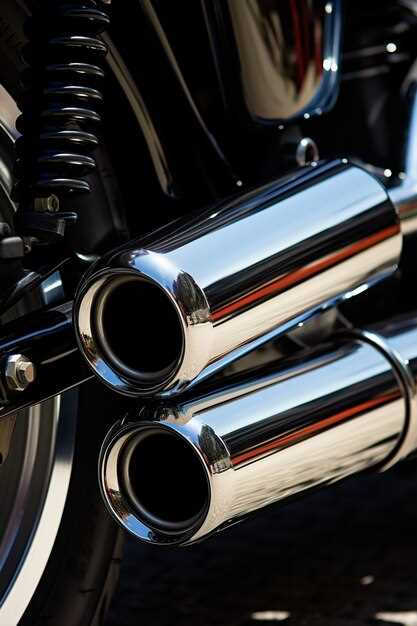
When it comes to maintaining or upgrading your Dodge Charger, one of the most critical decisions you’ll face is whether to choose OEM (Original Equipment Manufacturer) parts or aftermarket parts. This choice can significantly impact the performance, reliability, and overall experience of your vehicle. Understanding the key differences between these two options will help you make an informed decision that aligns with your needs and budget.
OEM parts are manufactured by the same company that produces the original components for your vehicle, ensuring a perfect fit and match in quality. In contrast, aftermarket parts are created by third-party companies and may offer a wide range of options, including performance enhancements or cost savings. However, the quality and compatibility of aftermarket components can vary significantly from one manufacturer to another.
In this article, we will explore the advantages and disadvantages of both OEM and aftermarket parts specifically for Dodge Chargers. By breaking down the attributes of each option, we aim to equip you with the knowledge you need to make a choice that best suits your vehicle maintenance or customization goals.
Understanding the Differences Between OEM and Aftermarket Parts

When choosing replacement components for your Dodge Charger, understanding the distinction between OEM (Original Equipment Manufacturer) and aftermarket parts is crucial. OEM parts are made by the vehicle manufacturer or an authorized supplier, ensuring they meet specific standards and specifications set by the automaker. These components typically offer a perfect fit and compatibility with your vehicle, as they are designed specifically for it.
On the other hand, aftermarket parts are produced by third-party manufacturers and are not endorsed by the original vehicle manufacturer. These components can vary widely in quality, price, and performance. Some aftermarket parts may offer enhancements, such as improved durability or performance features, while others may fall short of the quality found in OEM parts.
One significant advantage of aftermarket options is their often lower cost compared to OEM parts. For car owners on a budget, this can be an appealing factor. Furthermore, a wider variety of aftermarket parts means that consumers have access to performance upgrades and customization options that may not be available through OEM channels.
However, the potential downsides of choosing aftermarket parts include the risk of reduced reliability and a lack of warranty. Unlike OEM parts, which generally come with a manufacturer warranty, the coverage of aftermarket components can vary, leading to uncertainty in their longevity and performance.
In conclusion, when deciding between OEM and aftermarket parts for your Dodge Charger, consider factors such as cost, quality, performance, and warranty. Assessing these differences will help you make an informed decision that best suits your vehicle’s needs and your personal preferences.
Benefits and Drawbacks of Using Aftermarket Parts for Dodge Chargers
Aftermarket parts for Dodge Chargers offer several advantages, making them a popular choice among car enthusiasts and budget-conscious drivers alike. One of the primary benefits is cost-effectiveness. Aftermarket components are often priced lower than OEM (Original Equipment Manufacturer) parts, allowing owners to save money on repairs or upgrades. This affordability makes it feasible for more users to enhance their vehicles without breaking the bank.
Another significant benefit is the variety and customization options available with aftermarket parts. Many manufacturers provide a wide range of products that cater to specific performance needs, aesthetics, and personal preferences. This variety allows Dodge Charger owners to personalize their cars, from performance upgrades like exhaust systems and suspensions to cosmetic enhancements such as body kits and custom wheels.
However, the use of aftermarket parts also comes with certain drawbacks that potential buyers should consider. First, the quality of aftermarket components can vary widely. While some brands offer high-quality products, others may cut corners, leading to premature wear or failure. This inconsistency means that buyers must conduct thorough research and select reputable manufacturers to ensure reliability.
Additionally, aftermarket parts might not always fit perfectly or perform as intended. Unlike OEM components, which are designed to meet specific factory standards, aftermarket parts may require modifications for installation. This can result in added labor costs and potential additional repairs if issues arise. Furthermore, using certain aftermarket components might void the vehicle’s warranty, which could lead to significant expenses down the line.
In conclusion, while aftermarket parts for Dodge Chargers present opportunities for savings and customization, they also require careful consideration of quality and compatibility. Owners must weigh these benefits and drawbacks to make informed decisions that align with their vehicle maintenance and enhancement goals.
How to Choose the Right Parts for Your Dodge Charger

When selecting parts for your Dodge Charger, it’s important to consider both OEM and aftermarket options. Each choice has its advantages, so understanding your vehicle’s needs and your preferences is crucial.
Firstly, define your goals. Are you looking to maintain the original performance, enhance aesthetics, or improve functionality? If you prefer a factory-like experience, OEM parts are the way to go, as they are designed specifically for your vehicle model and typically offer reliable performance.
On the other hand, aftermarket parts can offer a wider variety of styles and performance enhancements at competitive prices. Research reputable aftermarket brands to ensure quality and compatibility. Look for parts that have positive reviews from other Charger owners, test results, and warranty guarantees.
Additionally, consider the installation process. Some aftermarket parts may require modifications or special tools for installation. If you’re not comfortable performing installations yourself, consult with a professional mechanic who is familiar with your vehicle.
Finally, keep your budget in mind. While aftermarket parts can be more affordable, ensure you are not compromising on quality. Balance cost with long-term value by choosing parts that sustain performance and reliability over time.
By weighing all these factors, you can make an informed decision that enhances your Dodge Charger while aligning with your personal goals and budget.




